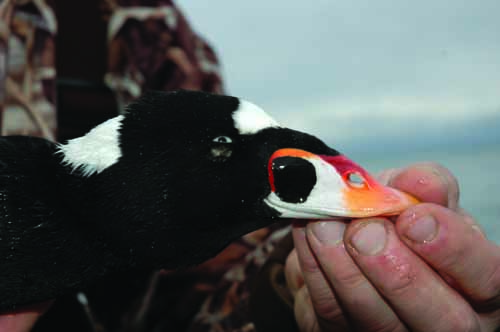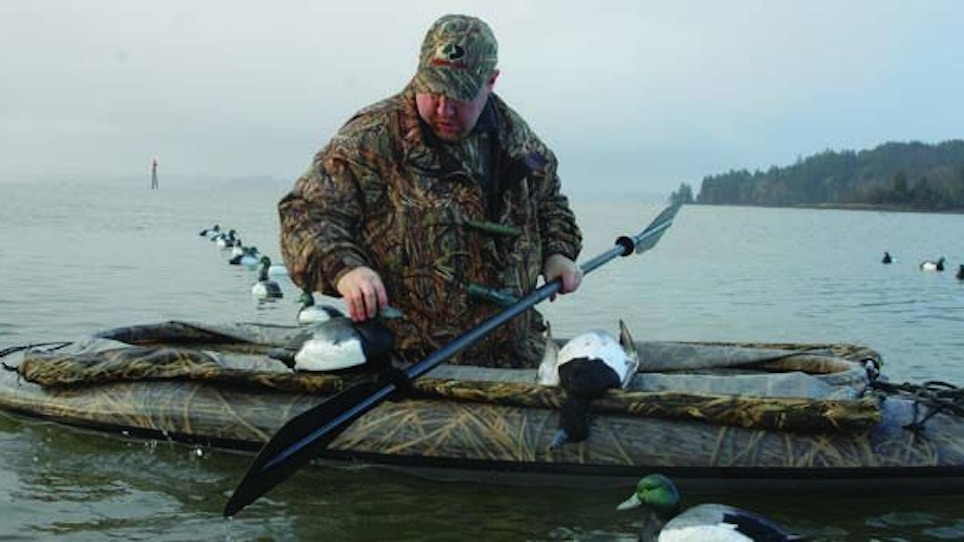 Some time in the mid-1800s, an old codger — an editor by trade — by the name of Horace Greeley was reported as having answered the question, “How do I make my fortune, sir?” with the advice, “Go West, young man.” Greeley, it seems, was talking about gold, and the riches that awaited settlers from the East who would dare venture cross-country to the rugged and very young western reaches of what is now the United States.
Some time in the mid-1800s, an old codger — an editor by trade — by the name of Horace Greeley was reported as having answered the question, “How do I make my fortune, sir?” with the advice, “Go West, young man.” Greeley, it seems, was talking about gold, and the riches that awaited settlers from the East who would dare venture cross-country to the rugged and very young western reaches of what is now the United States.
That was 150 years ago, and going west is still a good idea. However, it’s not gold we’re talking about now. No, sir — it’s waterfowl; feathered gold, if you will. Certainly, the South has its mallards and New England has its sea ducks, but if it’s a true variety you seek, all wrapped neatly in more publicly accessible acres than you could hunt in a hundred lifetimes, then the not-so-wild West is the place where your personal waterfowling fortune just might be made.
Washington
Washington state is a tough call for the waterfowler. Why? Well, it’s sure as heck not because there aren’t plenty of public-land options, nor lack of a variety of species that one might accurately refer to as the 64-Pack Crayola Crayon assortment. The Evergreen State boasts puddlers, divers and sea ducks all, as well as nine of the 11 recognized subspecies of Canada goose. That’s right: nine.
However, to me, Washington’s all about sea ducks, and the harlequin in particular; in fact, Washington is the only state in the Lower 48 where ’fowlers can hunt this fascinating blue sea duck. True, the annual limit is one, but the trophy room wall typically only affords space for one “blue duck,” what with the requisite driftwood and wave-washed cobblestone base. Trust me, it looks fantastic.
But harlequins aren’t the only unique sea duck in Washington. Three subspecies of scoter — commons, blacks and white-wings — call the coastal waters of the Pacific Northwest home, as does the ocean-going pintail, the long-tailed duck. More information is available at www.wdfw.wa.gov.
Oregon
Perhaps California’s Sacramento Valley is better than southwest Oregon’s Klamath Basin in terms of procuring a trophy drake pintail, also known as sprig, for the wall, but I bet there would be waterfowlers aplenty willing to argue that statement. Upper Klamath Lake near Klamath Falls in the south-central portion of the Beaver State should be on every ’fowler’s must-hunt list. A part of this immense wetland complex is national refuge, as is the Klamath Marsh to the north and Lower Klamath Lake just across the California state line to the south. Sprig make up a large percentage of the daily take in this region, followed by northern shovelers, widgeon, green-wing teal and specklebellies. More information is available at www.dfw.state.or.us.
California
In March of 2007, my wife, Julia Carol, and I were afforded the opportunity to travel to Eureka — Humboldt County, to be precise — and hunt the diminutive Aleutian Canada goose with two-time state goose-calling champion and former Kentuckian Curt Wilson. Once listed as endangered, the Aleutian (for a visual, think small mallard-sized Canada, with a white neck ring) has staged an incredible comeback; so dramatic has this population surge been that today, the birds are making somewhat of a nuisance of themselves in pasture fields along the California coast.
A talented waterfowler, Wilson uses lesser Canada and cackler decoys when targeting Aleutians. “It’s important,” he says, “in this case to match the size of the decoys with the geese. I see other hunters using magnum or super magnum Canada goose decoys, and it just doesn’t work all that well.” Camouflage, concealment and natural decoy movement, Wilson adds, are also vitally important. It’s wise to get out early, scout, introduce yourself and form those relationships with private landowners to gain access. More information is available at www.dfg.ca.gov.
Idaho
Every year for the past five waterfowl seasons, Julia Carol and I have driven along sections of Idaho’s Snake River during early January as we make our way from eastern Iowa to Washington state on business (Translation: Two weeks of duck hunting followed by business). And each year, I’m amazed at the number of birds rafted on the still-moving waters of the Snake. With the exception of flocks of Canadas and small pockets of mallards, the birds are divers, with a goodly number of those being easy-to-spot black-and-white common goldeneyes.
I mention the Snake and goldeneyes for a couple of different reasons. First, these tenacious divers make incredibly striking mounts; quite unusual in this day of standard-fare mallards and other puddlers. Secondly, and when they’ve been eating freshwater clams, ’eyes can be very good on the table — just clean them quick, remove all the fat, slice ’em thin and flash-fry in a smoking-hot mix of olive oil and minced garlic. And finally, there’s a lot of space on the river, so being alone shouldn’t be tough. Remember, though, that goldeneyes are notoriously species-specific when it comes to decoys. You’d do well to invest in 12 to 18 life-sized goldeneye decoys and set them apart from your other blocks. More information is available at www.fishandgame.idaho.gov.
Utah
Cinnamon teal, swans and tens of thousands of public waterfowling acres. That’s Utah. To be a bit more specific, it’s the Great Salt Lake and her miles upon miles of marshland, the vast majority of which is open to the hunting public.
 Stretching an impressive 92 miles long by 48 miles wide, Utah’s Great Salt Lake (GSL) is the largest lake in the United States, and second only to the Dead Sea in terms of salinity; however, the shores of the GSL are anything but dead. Along the lake’s eastern shore is an immense complex of freshwater and brackish marshes that are available from October through January to area waterfowlers. At over 18,000 acres, the Farmington Bay Wildlife Management Area (WMA) on the lake’s southeastern corner is a good bet for a variety of species, including fully plumed cinnamon teal (December) and, for those lucky enough to have drawn a permit, tundra or whistling swans. Located on the northern tip of Salt Lake City, Farmington Bay does attract plenty of attention; however, that’s not to say that solitary hunts can’t be had. You just have to work a little harder. Other WMAs along the lakeshore include Ogden Bay, Howard Slough, Harold Crane and Public Shooting Grounds. More information is available at www.wildlife.utah.gov.
Stretching an impressive 92 miles long by 48 miles wide, Utah’s Great Salt Lake (GSL) is the largest lake in the United States, and second only to the Dead Sea in terms of salinity; however, the shores of the GSL are anything but dead. Along the lake’s eastern shore is an immense complex of freshwater and brackish marshes that are available from October through January to area waterfowlers. At over 18,000 acres, the Farmington Bay Wildlife Management Area (WMA) on the lake’s southeastern corner is a good bet for a variety of species, including fully plumed cinnamon teal (December) and, for those lucky enough to have drawn a permit, tundra or whistling swans. Located on the northern tip of Salt Lake City, Farmington Bay does attract plenty of attention; however, that’s not to say that solitary hunts can’t be had. You just have to work a little harder. Other WMAs along the lakeshore include Ogden Bay, Howard Slough, Harold Crane and Public Shooting Grounds. More information is available at www.wildlife.utah.gov.
Stay tuned for Part 2!






